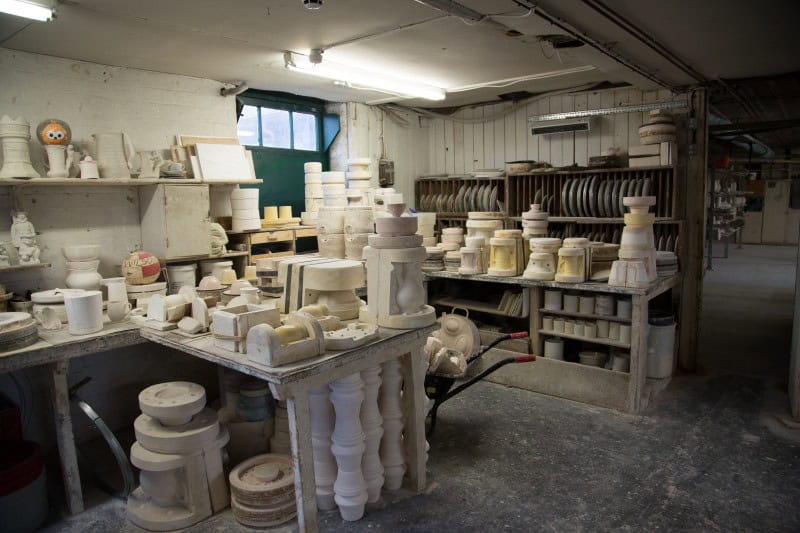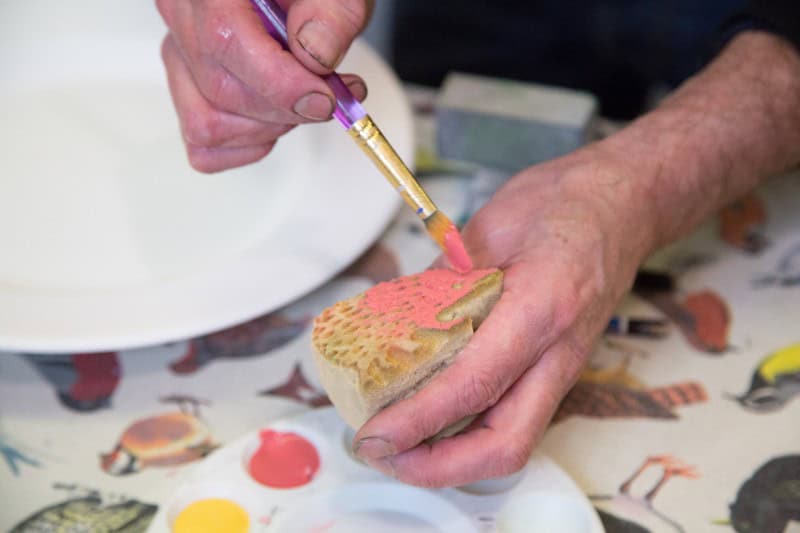More than 150 years after the heyday of the British ceramics production, things are looking more positive than for some time. Phil Tomlinson explains how a broken industry is putting itself back together
Potteries capital Stoke-on-Trent, in Staffordshire, England, is currently hosting the fourth British Biennial Ceramics festival, an eight-week exhibition and international showcase. And the BBC is shortly to air The Great British Pottery Throw Down, a sort of Bake Off with clay filmed at Stoke’s Middleport pottery factory (which recently received a £9m restoration).
Behind these public events, Stoke’s old industrial district is looking much healthier than it did a decade ago, when it appeared in danger of collapsing altogether. Ceramics in Stoke and the surrounding Staffordshire area includes everything from dinner sets and vases to bricks and industrial tiles for roofs. Most of the revival has been in table and giftware, where exports have risen by 36 percent between 2009 and 2014, and with another strong performance recorded in the first six months of this year, they are set to rise again.
The district has benefited from substantial new investment in both technology and factories in recent years, with distinguished names such as Waterford Wedgwood Royal Doulton, Wade and the hotel-ware specialists Steelite leading the way. Numerous companies are hiring, such as Emma Bridgewater, which has become renowned for its polka-dot designs and other motif drawings using techniques that date back more than 200 years.
“An industry that looked to be on its last legs a few years ago has reinvented itself.”
There has been a resurgence in small and medium-sized firms, with new arrivals such as Dimbleby Ceramics joining the likes of more established designers such as The New English and Anita Harris in carving out new market niches.
This was England
Back in the 19th century, the local industry employed more than 100,000 people. Even in 1979 around 52,700 people still worked in the ceramics factories which dominated the city’s industrial landscape. Since then, the UK industry experienced a long decline as recession and globalisation took their toll. Several high-profile factories closed in Stoke and in the 1990s some manufacturers outsourced production to south-east Asia as firms sought to take advantage of lower labour costs.
This “hollowing out” had a dramatic effect upon both the local skills base and employment, which fell to around 10,000 in 2008. Yet since then, employment has stabilised and recently begun to rise as firms have started recruiting again. There is increasing optimism and the latest data shows that in table and giftware gross value-added, which is an indicator of profitability, rose from £125m to £181m between 2009 and 2013. In short, the sector got around 45 percent richer over the period.

The Middleport pottery factory in Stoke-on-Trent © Norio Nakayama
So what has changed? The first factor is global demand, where particularly US and Japanese consumers have become increasingly averse to purchasing premium wares manufactured cheaply in Asia (especially China) but sold under one of the branded names from the English potteries. With Stoke wares still perceived to be among the highest quality in the world, the Made in England back-stamp is an increasingly important marketing tool.
China has also become less attractive as a manufacturing location due to rising labour and energy costs, anti-dumping duties and logistical problems. Some firms, including Waterford Wedgwood, have begun to bring some of their production back to the district as a result.
The race to the top
We’ve also seen the more successful district firms upgrading their product lines to adapt to globalisation by paying more attention to designs and wider marketing activities. This has enabled them to carve out specific market niches, avoid cut-throat low-cost competition and instead command premium prices. Notable examples include Emma Bridgewater and, at the very high end, Moorcroft, whose wares are largely marketed upon their unique designs and being hand-crafted within the district.
“There is nothing inevitable about decline.”
Companies that provide services to the big players have been pursuing similar strategies. A good example is Times Square, which prints designs on to ceramics. Known in the trade as decals, the lower and medium-end work in these designs had become susceptible to Asian competition. So Times Square began investing in a higher-quality and more complex set of decals, which are difficult to imitate and appeal to higher-value clients.
Times Square has also started using these techniques in related sectors including glass, fine-art reproduction and high-end photographic posters. Other players are going to greater limits, with ceramics technologies now being used in anything from bio-inserts and bone transplants to drug delivery systems and mobile transmitters.
Finally there has been a big change of attitude within the district. There was a tendency for the management of family firms to pass from one generation to the next, which sometimes reinforced rigid practices and closed thinking. Recent managerial appointments have tended to draw from across manufacturing and other sectors. As well as the shift away from the mass market, this has led to wider engagement with consumers and more emphasis on marketing and technology.
Like what you’re reading? Get your Positive News subscription here
Local firms and institutions such as the British Ceramic Confederation, industry testing centre Lucid-eon and the local chamber of commerce have also made greater efforts to encourage networking and collaboration. We’re seeing producers benchmarking their products and manufacturing processes and visiting one another’s factories. Not only have they been sharing knowledge and ideas, some leading firms have been informally advising and supporting smaller ones. For instance Steelite’s new factory has incubator units for start-ups. There has also been greater collaboration among firms on industry-wide issues such as improving energy efficiency and local skills development.
The net result has been that an industry that looked to be on its last legs a few years ago has reinvented itself. No one is predicting a return to the mass employment of yesteryear, but there appears to be a renewed vigour that is helping to ensure that there is at least a future for the sector. It demonstrates that there is nothing inevitable about decline, and that old traditional manufacturing districts are capable of enjoying a renaissance.

The Emma Bridgewater Factory in Stoke-on-Trent © Norio Nakayama
First published by the Conversation
